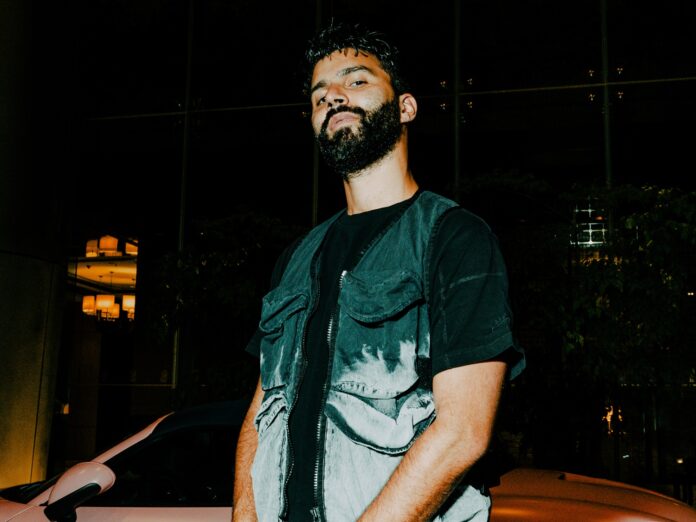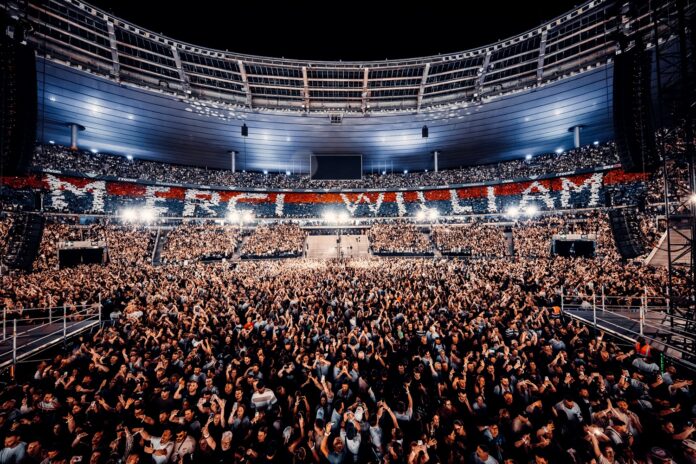One anime film that has recently received widespread critical acclaim, scoring top honors at international film festivals and award ceremonies, is Josee, the Tiger and the Fish. Directed by anime filmmaker Kotaro Tamura from a screenplay written by Sayaka Kuwamura, the movie adapts a 1984 story written by Seiko Tanabe. The film follows a young diver, Tsuneo, who becomes the caregiver for a young woman using a wheelchair named Josee. After an abrasive introduction to one another, the two grow closer and share their respective dreams.
In an exclusive interview with CBR, Tamura revealed his personal connection to Josee, the Tiger and The Fish. The director also praised the voice cast for bringing Tsuneo and Josee to life and explained the importance of the film's themes and present-day Osaka setting.
Kotaro-san, this is one of the biggest projects you've ever directed. What was it that interested you in bringing this story to life?
Kotaro Tamura: There's been a trend within Kadokawa recently to make more anime film adaptations of literary works. Kadokawa producer Shuzo Kasahara gave me a big paper bag full of books, and as I was going through them one by one, Seiko Tanabe's Josee, the Tiger and the Fish caught my eye. The title gave me no clue what kind of story it was. When I got curious and started reading it, I realized it was a short story that wasn't even thirty pages long. And in terms of a four-act story, it ends at about the second act. The story was really powerful though, and I kept wondering about what happens to the two characters afterward. More than anything else, I thought the Josee character was really appealing. I had a hunch it would become a really interesting project if we took this story, restructured it to fit the current day, and turned it into a feature-length anime film. That's how the planning for the Josee anime film adaptation began.
I love how seamlessly the hand-drawn and CG animation blend together in this film. How was it combining the two styles?
Thank you very much. Japanese 3D computer graphics have gotten much closer to the style of cell animation from the past, so I was able to use a hybrid style that combined hand-drawn and CG animation. One place I really made use of that was the wheelchair. Wheelchairs move by the turning of their wheels, so they can only move as if on rails. It's extremely difficult to animate a person and a wheelchair together by hand because they move in such different ways. In particular, scenes, where someone is struggling or flailing while riding a moving wheelchair, are so incredibly difficult that they make the animators want to scream, "Don't make me do it!" Ultimately, we used 3D computer graphics or hand-drawn animation depending on the shot, and others used 3DCG as a guide and drew it by hand. We were only able to pull that off because it was a feature film. We could take some time and put more work into it than in a TV series.
The ocean plays a major role in the story, offering Tsuneo and Josee an opportunity to escape and embrace their dreams. How was it incorporating the underwater sequences into the film?
I enjoy watching ambient background and environmental videos, especially ocean and underwater videos. There was a time when I watched a lot of those. So I wanted to do something like that in the movie. There are still many parts I could have kept working on, but I went through a lot of trial and error to at least create that kind of atmosphere a little.
Unfortunately, with retake after retake, I put a lot of pressure on cinematographer Kanbayashi-san and the staff members in charge of that scene. The movie has many scenes of normal life, but I thought we could expand the scope of the film by showing images of beautiful things outside of daily life as well. I thought it would reflect poorly on the film as a whole if we couldn't show the beauty of the underwater world too as a symbol of something outside of normal life.
Even before Tsuneo and Josee grow close, I love how this film showcases city life in Japan. What did you want to communicate about the everyday beauty of Japanese cities and those that live in them?
The story is set in Osaka. According to the Economist Intelligence Unit's 2021 "Global Liveability Ranking," Osaka was ranked second place in the world after Auckland. Most of author Seiko Tanabe's work, including Josee, the Tiger and the Fish, is written in Osaka dialect, so we couldn't leave Osaka out when adapting a Tanabe story for the screen.
Osaka has an unusual layout that mixes working-class and urban districts. The people who live there value humor and are emotionally very close to each other. It's a special and mysterious place even within Japan. But until now, it was really rare to set an anime film there. I wanted to try to show at least some of Osaka's charm: the food, the landscape, the language. Once the pandemic settles down, please come and visit Osaka sometime!
With this movie going into some really emotional areas, how was it hearing the voice cast bring their energy to these characters?
Josee's actor Kaya Kiyohara and Tsuneo's actor Taishi Nakagawa are both top-level TV and film actors in Japan. This movie is of course anime, but it's a very down-to-earth story where nothing fantastic happens. Since that is the kind of world it is in, I wanted to work with people who had a more live-action acting style, who wouldn't sound too coded as anime characters, and who could bring a subtle realism to their performances.
We cast the role of Josee out of candidates from the Kansai region. Kiyohara-san is a tidy and easy-going type of person, which is the exact opposite of Josee's stubborn character. Josee's words are very violent, but she also has a kind of secret sensitivity that allows her to make sublime drawings that can capture a person's heart. By having Kiyohara-san play Josee, I wanted to express something of the more dignified and graceful parts hidden within Josee's personality. I don't think Kiyohara-san had played a character like Josee before. With her spouting out Josee's crude dialogue, I think we were able to maintain a delicate balance that combined both Josee's violence and her sensitivity.
Taishi Nakagawa's appearance and personality are a perfect match for Tsuneo. You could almost say he's the "real Tsuneo." I thought about having Nakagawa-kun just act naturally, but during the test recordings, he developed his own character for Tsuneo. It sounded a little like the stereotypical character who gets dragged around by the leading girl in an anime show for teens. But Tsuneo in our film isn't passive like that. We were aiming more for a character who would keep up with Josee at his own pace, without taking everything that she says too seriously. A normal person would probably get really psychologically exhausted if he took everything Josee says at face value. However, Tsuneo has this unique skill to ignore things when he needs to. I think that's why he is able to connect with such a seemingly annoying girl like Josee. When I told that to Nakagawa-kun, he immediately changed his approach. I was really impressed with how much he changed his performance, even with the same script and same lines.
Now that this movie is about to be released to American audiences, what are you hoping to bring to Western audiences with this film?
When I read the original novel, it left a really cheery, refreshing impression on me. Even though Josee had faced a lot of trouble in the past, she was happy to be living in the present with Tsuneo. However, she still seemed to be unhappy somewhere deep inside. When I started to wonder what caused that unhappiness, I began to see the themes that would fit this as a feature-length movie. One issue in the novel was that Josee only had very trivial dreams, like wanting to see a tiger or go to an aquarium. Another was that Josee only seemed to be able to connect to society through Tsuneo.
In this version, that's only Josee's starting point. Once Tsuneo starts giving her opportunities to go out more, she becomes friends with Kana and starts to develop as a social being, slowly but surely. The movie adds that idea of Josee changing. Also, the original story was written in 1984. Today, the circumstances for people with handicaps in society have changed greatly. While Josee has a handicap that you can see, I think everyone carries something like that in their hearts, however large or small. With this movie, I wanted to respond to the themes of the original in a way that would imagine how things might be different today. Just as Josee opens the door to a new world, I hope this movie inspires people to face their own "tigers" and "fish" and to take a step in a new direction in life.
Directed by Kotaro Tamura, Josee, the Tiger and the Fish received a limited theatrical release in North America this past November from Funimation. Plans for a home video release in North America have not yet been announced.
About The Author

